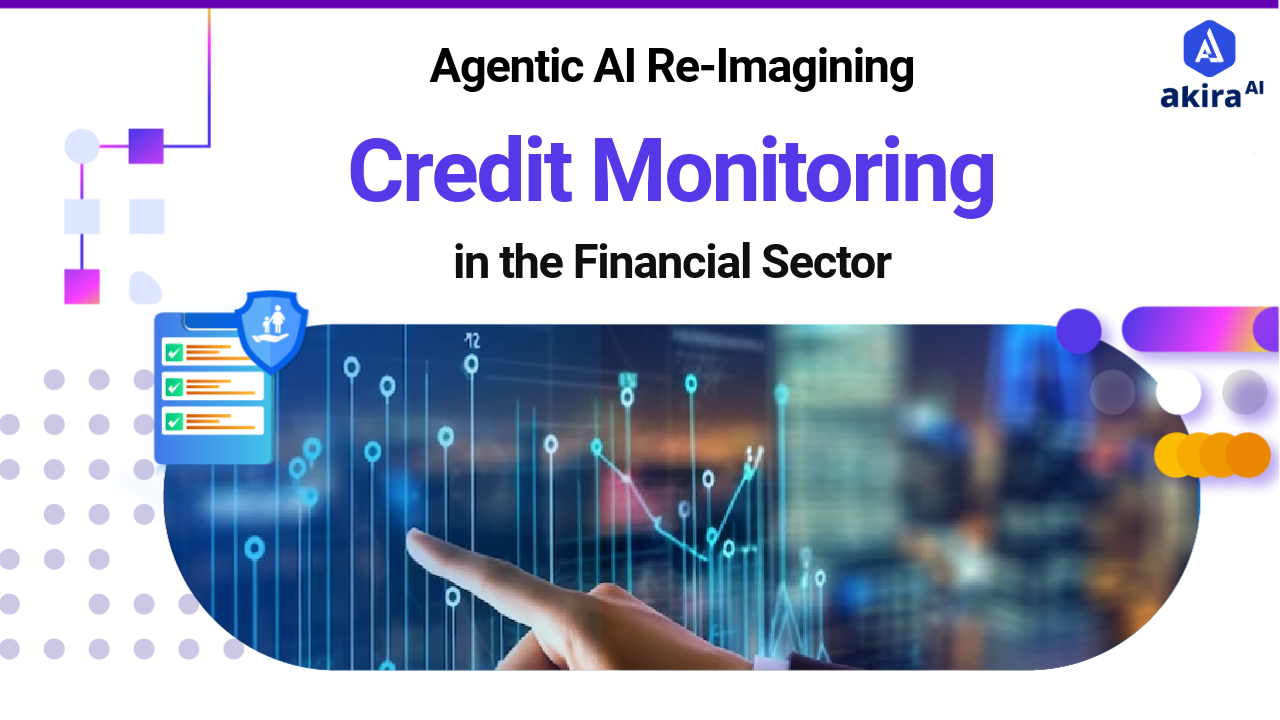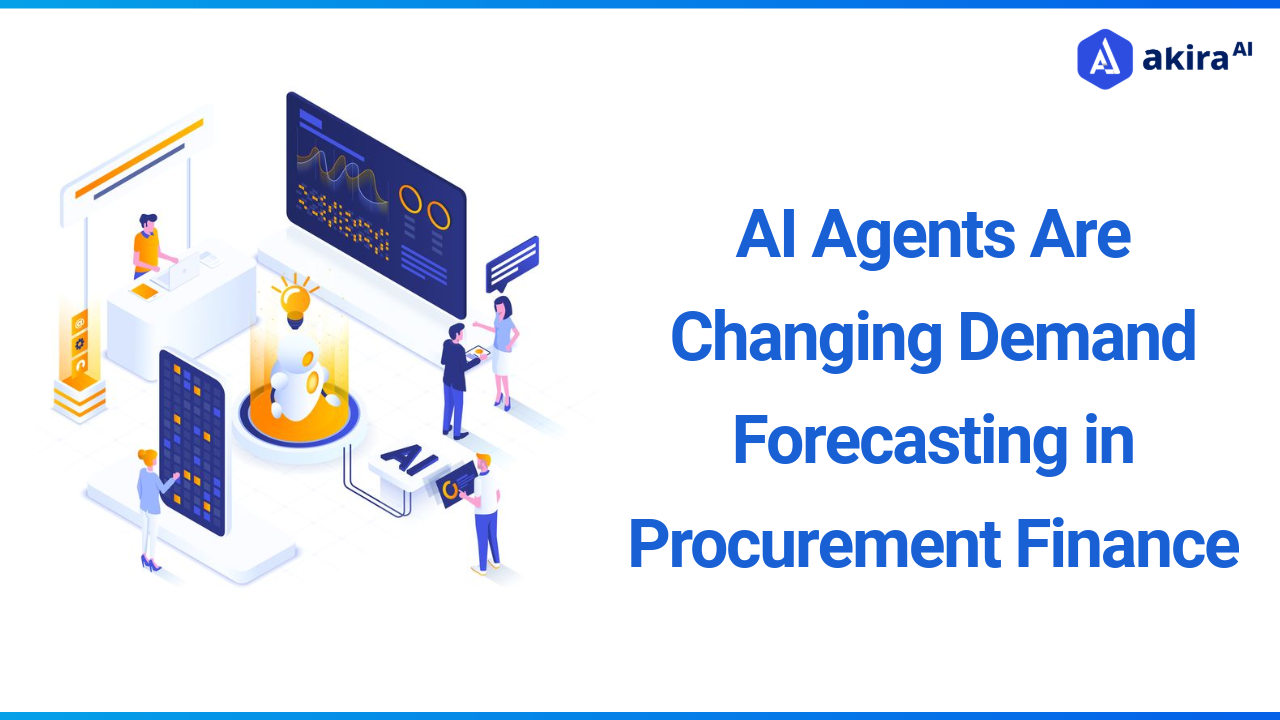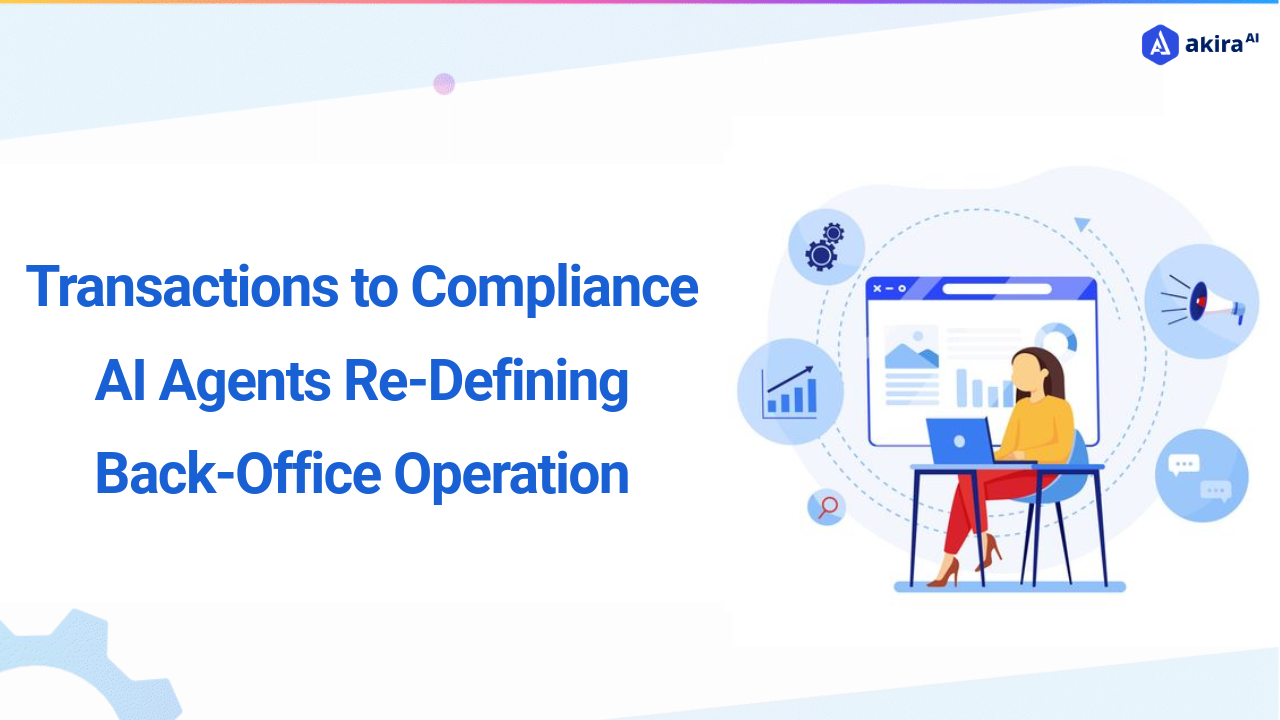In the current rapidly evolving financial landscape, risk management has become more complex than ever. From facing huge volumes of data to sophisticated ways of fraud, and ever-changing requirements in regulation, the traditional approaches toward risk management grow weak inside any financial institution. This gives rise to AI-driven multi-agent systems, in which Akira AI redefines risk management and mitigation within an organization.
The blog describes AI agents in risk analytics and features a state-of-the-art multi-agent solution developed by Akira AI.
AI Agents Unleashed: Revolutionizing Risk Analysis
AI Agents
AI agents are computer programs that are designed to carry out tasks independently by making decisions based on their environment, input, and some set objectives. Unlike conventional automation systems that strictly follow predefined instructions, AI agents can think, adapt, and act on their own. They are configured to evaluate their surroundings, learn from past experiences, and make decisions to accomplish specific goals.
AI agents can vary from basic program performing single tasks to sophisticated systems managing complex processes. They excel in unpredictable environments and utilize their learning capabilities to navigate the internet, interact with applications, process enormous amounts of data and engage in transactions along with refining their methods on the feedback.
AI Agents in Risk Analysis
Risk analysis involves evaluating the potential risks that could have an adverse impact on the organization. AI agents work by automating key processes to ensure accuracy, speed, and compliance. These agents can analyze vast amounts of data in real-time, assess risks using advanced machine learning models, and monitor compliance with regulatory standards. This ultimately results in a more efficient and proactive approach to risk management.
Key Challenges Of Autonomous Risk Analyst
Financial institutions face several challenges in risk analysis, including:
-
Manual and Time-Consuming Processes: Most of the activities concerning risk management, especially onboarding and underwriting, are usually manual, error-prone, and resource-intensive. It is due to this manual nature of processes that decision-making gets slowed down, making it hard to adapt to fast-changing conditions.
-
Fraud Detection: The detection of fraudulent documents or transactions is, in fact, a critical task but highly complex. All the traditional methods tend to be slow and the delays in fraud detection ultimately leads to financial loss. The need for advanced analysis in spotting fraudulent activities is becoming increasingly challenging.
-
Regulatory Compliance: In the current landscape, regulations are constantly evolving. With this, financial institutions have to maintain constant vigilance and carry out dynamic process adjustments to stay compliant, thus adding to the complexity.
-
Data Security and Privacy: As financial data is sensitive, much concern is expressed regarding the security and privacy of the data. In any risk assessment, this information is in transit across diverse activities; its breach or misuse can lead to high reputational and financial damages.
-
Data Overload: The quantum of data that financial institutions must deal with —right from customer information and market trends down to transaction histories—is vast. Traditional systems, therefore, are not able to provide efficient risk assessment.
-
Predictive Accuracy: Most of the risk models use historical data, which do not have the ability to predict future risk accurately, especially when the financial markets become volatile. As it is difficult to adjust to foresee sudden economic and geopolitical changes, precise risk forecasting is a challenge for organizations in making informed decisions.
Addressing the challenges via AI Agents
AI agents revolutionize risk analysis by addressing key challenges through automation of time-consuming tasks such as data collection and compliance monitoring, which boosts efficiency and reduces errors. They enable real-time analysis to swiftly detect anomalies and potential fraud, which leads to swift decision-making. The agents also help the organizations avoid penalties and data breaches by continuously monitoring regulatory compliance. Overall, AI agents effectively address the challenges of risk analysis, ensuring both operational efficiency and robust data security.
Unveiling Akira AI’s Multi-Agent Risk Analysis
Akira AI leverages a multi-agent system to provide a comprehensive solution to risk analysis. The architecture is designed to orchestrate various specialized agents that handle different aspects of risk management, ensuring a seamless and efficient workflow.
.jpg?width=4000&height=2250&name=Architecture%20(1).jpg) Figure: Technical Architecture of Autonomous Risk Analysis
Figure: Technical Architecture of Autonomous Risk Analysis
Process Flow
The process begins with the Master Orchestrator Agent, which oversees the entire workflow, integrating inputs from various data sources such as customer data, credit reports, and external watchlist.
- Data Ingestion: This includes customer data, credit reports, and external watchlists. The data is then ingested to a risk analysis system for further analysis.
- Pipeline Setup: The data is gathered and then processed through pipelines. It undergoes cleaning and transformation using models and vector databases to prepare it for analysis.
- Identity Verification: Next, the system verifies customer identities using KYC policies and documents through API integrations. It also performs Anti-Money Laundering (AML) compliance checks to flag any potential risks.
- Data Risk Aggregation: All the customers' financial histories, their profiles contributed from different sources are aggregated with input information and fed into machine learning models for deep analytics.
- Dynamic Scoring: There are machine learning models that calculate the risk scores for each customer through the amalgamation of data. The scores will be updated dynamically with the arrival of any new data.
- Underwriting Decision Support: It accomplishes this by use of scores generated to support underwriters whether to accept or reject the request or transaction.
- Compliance Reporting: Reports on compliance are generated from these automated audits, whose re..sults can be reviewed during regulatory inspections.
- Conflict Resolution: The system automatically resolves issues noted through the process where possible or are escalated to a human agent if necessary.
- Final Output and Decision: In the final steps, the system is tasked with continuous risk assessments. Regulatory compliance reports and risk analysis reports are generated which are used for risk management and decision making.
Technical Stack of Autonomous Risk Analyst
Our composite AI framework utilizes the components from traditional Machine learning to advance Multi-agent systems:
|
Layer |
Component |
Tech Stack |
|
Data Sources Layer |
Customer Data, Credit Reports, External Watchlists |
APIs, RESTful Services: To ingest and aggregate data |
|
Data Pipeline Layer |
Data Pipelines |
Apache Airflow, Apache Kafka: For efficient data processing, |
|
Embedding Models |
Hugging Face Transformers |
|
|
Vector Database |
Qdrant, Pinecone: Vector database for storing and retrieving vectorized data efficiently. |
|
|
Data Aggregation |
Apache Spark, Pandas: Tools for aggregating and cleaning data.
|
|
|
Multi-Agent layer |
Agents |
LangChain, Langraph framework: To manage the risk analysis process flow and decision-making. |
|
Knowledge Graph |
Neo4j: Manages relationships between data points |
|
|
LLM |
Domain-specialized models, eg -for AML checks |
|
|
Risk Scoring & ML Models |
TensorFlow: Models that predict and score risks based on input data. |
|
|
Underwriting Decision Support |
Scikit-learn, Decision Trees: This is used to assist in underwriting and supporting automated decisions. |
|
|
RAG (Retrieval Augmented Generation) |
Langchain, llama index frameworks utilized for building RAG pipelines for compliance. |
|
|
Backend Layer |
Backend Pipelines |
FastAPI, Flask, Django: For developing scalable and secure APIs to facilitate agent communication. |
|
Frontend Layer |
User Interface |
React, Vue.js, Angular: For creating intuitive user interfaces. |
|
Infrastructure Layer
|
Infrastructure |
AWS, GCP, Hybrid cloud infrastructure. |
|
Authentication & Authorization |
OAuth 2.0, JWT: Ensures secure user authentication. |
Multi-Agent System in Action
The multi-agent system in Akira AI operates autonomously, ensuring that each component of risk analysis is handled efficiently.
- Master Orchestrator Agent
The central command unit directs the overall automation of the entire risk analysis process. It then accords with agentic workflow by delegating the tasks to other agents so that at every stage in the process, each step is free of errors. It is dependent on LLM for high-order decisions. Here the knowledge graph captures routes, rules, and relationships related to this domain. - Identity Verification and KYC Agent
This agent plays a very important role in the verification processes for customers and authentication of the customer. Biometric verification and document verification are performed by the system by interacting with various API's, along with AML compliance checks to spot suspicious red flags during onboarding. This ensures proper ID verification and regulatory compliance, which reduces the risk linked with fraudulent accounts, and non-compliant customers. - Risk Scoring and Assessment Agent
Risk Scoring and Assessment Agent enables aggregate and analysis functionality through dynamic risk assessment by scoring the data through machine learning models. The agent creates a complete profile of the customer by pooling data from internal as well as external data sources. Real-time scoring enables timely and more accurate financial decisions of the institution by getting rid of the bottleneck. - Compliance Monitoring Agent
Focused on maintaining regulatory standards, this agent continuously monitors policies, regulations, and financial transactions to detect and address non-compliance. It performs automated compliance audits, generates reports, and ensures the organization remains aligned with evolving regulatory requirements. Additionally, it enforces data security and privacy policies to protect sensitive customer information. - Final Processing
In the final steps, the Issue Resolution Agent identifies and resolves discrepancies or issues within the risk management process. It autonomously addresses most problems in real-time and escalates more complex issues to human analysts when necessary. Reports are generated that would be used for decision-making.This agent ensures that any discrepancies in risk scoring, identity verification, or compliance monitoring are promptly resolved, thereby maintaining the efficiency and integrity of the entire risk management system.
Traditional Solutions vs. Akira AI Solution for Risk Analyst
|
Aspect |
Traditional Solutions |
Akira AI Multi-Agent Risk Analysis |
|
Data Processing Speed |
Manual or semi-automated processes lead to slow data ingestion and analysis. This causes delays in decision-making. |
Automated data pipelines and multi-agent workflows process large datasets in real time. This enables faster decision-making. |
|
Data Sources Integration |
Limited ability to integrate multiple data sources (e.g., customer data, credit reports, watchlists) |
Seamless integration of multiple internal and external data sources (e.g., embedding models, vector databases), providing comprehensive insights. |
|
Fraud Detection and AML Checks |
Manual checks or rule-based systems often miss subtle or evolving fraudulent activities. AML checks are static and prone to delays. |
Continuous, real-time document verification and AML compliance checks detect fraud more accurately with automated red flag detection. |
|
Risk Scoring and Decision Making |
Traditional scoring models often result in outdated or inaccurate risk assessments. |
Dynamic risk scoring is utilized to assess risk based on real-time data, which leads to more precise risk profiles. |
|
Compliance Management |
Compliance monitoring is reactive, Periodic audits and manual checks are conducted, which increase the risk of non-compliance. |
Automated regulatory monitoring and compliance audits. This ensures real-time adherence to evolving regulations, reducing legal risks. |
|
Issue Handling and Resolution |
Discrepancies or issues require manual investigation and resolution, leading to slow issue management and potential bottlenecks. |
Automated issue resolution with the ability to escalate complex cases to human analysts if needed, ensuring timely responses. |
Key Benefits of Automated Risk Analyst
Akira AI’s risk analysis solution offers several key benefits:
-
Increased Accuracy: As the agents are able to analyze vast amounts of information, it helps reduce human error and false positives.
-
Proactive Risk Management: The AI agents can identify potential risks early and manage them before they have any significant impact.
-
Insurance Underwriting: The multiagent system ensures that the underwriting processes in the financial sector meet the regulatory standards and avoid any complication issues.
-
Faster Decision-Making: Multi-agent systems support real-time data analysis; hence, onboarding new clients and underwriting loans take less time. Such high-speed decision-making owes much value to sectors where the result of decisions demands a fast response.
-
Transparency: Multi-agent systems keep the most detailed logs of all decisions made; for this reason, they provide total transparency and an audit trail. This makes the feature crucial to compliance with regulations, especially in heavily regulated sectors like banking, where every decision has to be traceable and justifiable.
Conclusion
The integration of AI agents in risk analysis represents a significant leap forward in how financial institutions manage risk. Akira AI’s multi-agent system provides a comprehensive, autonomous, and proactive solution that addresses the challenges of traditional risk management methods. By leveraging advanced technologies and orchestrating specialized agents, Akira AI ensures that financial organizations can operate securely and efficiently in a complex regulatory environment.


